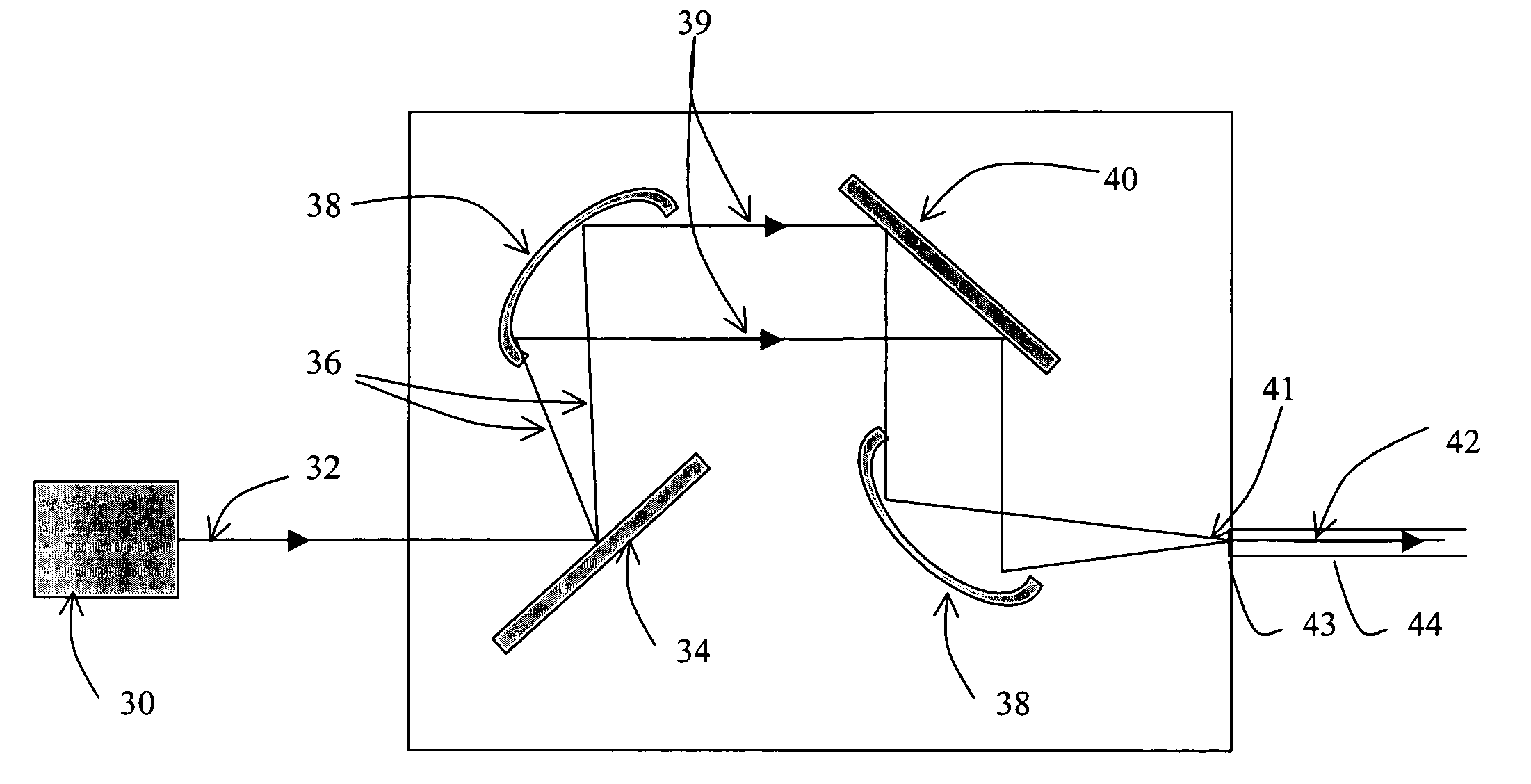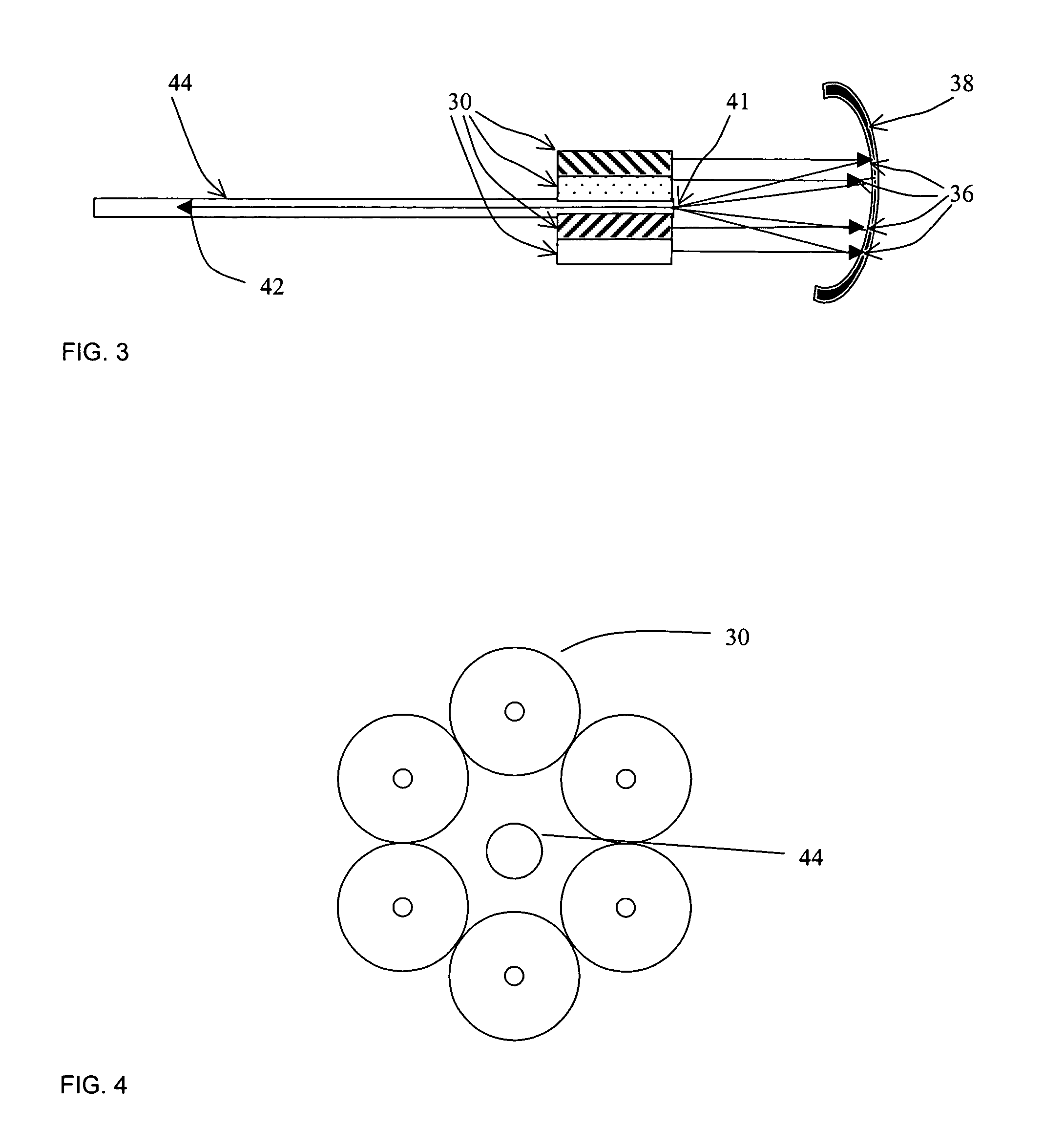Device and method for transmitting multiple optically-encoded stimulation signals to multiple cell locations
a technology of optical encoded stimulation and cell location, which is applied in the field of devices and methods for stimulating cells, can solve the problems of affecting the implementation of existing cochlear implant technology, affecting the safety of electrical charges, and limiting resolution, so as to improve the efficiency of transmission and resolution, the effect of reducing the size of the surface area
- Summary
- Abstract
- Description
- Claims
- Application Information
AI Technical Summary
Benefits of technology
Problems solved by technology
Method used
Image
Examples
Embodiment Construction
[0055]In the following description, the terms “optical fiber” and “fiber” are used in a general manner and include all types of optical waveguides. The term “light” is used to refer to all electromagnetic radiation, including visible light. Furthermore, the term “optical” is used to qualify all electromagnetic radiation, including light in the visible spectrum.
[0056]The present invention relates to a stimulation device for transmitting stimulation information to a number of stimulation sites. It is understood throughout the present application that the present device may be used for either the electrical or the optical stimulation of cells, molecules, etc, and that the expression “stimulation information” refers to any appropriate signal modulation accomplishing the required stimulation. The stimulation sites may be embodied by cell sites or any other location where stimulation is needed, either in vitro or in vivo.
[0057]Generally, the device according to the present invention provi...
PUM
 Login to View More
Login to View More Abstract
Description
Claims
Application Information
 Login to View More
Login to View More - R&D
- Intellectual Property
- Life Sciences
- Materials
- Tech Scout
- Unparalleled Data Quality
- Higher Quality Content
- 60% Fewer Hallucinations
Browse by: Latest US Patents, China's latest patents, Technical Efficacy Thesaurus, Application Domain, Technology Topic, Popular Technical Reports.
© 2025 PatSnap. All rights reserved.Legal|Privacy policy|Modern Slavery Act Transparency Statement|Sitemap|About US| Contact US: help@patsnap.com



